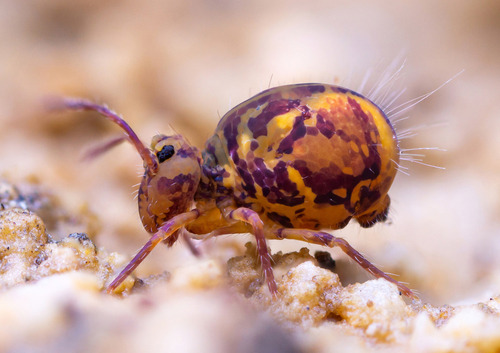
21 years old biology student. And yes, i have an addiction to philosophy and coffee. instagram: @wovy_lazuli
123 posts
Latest Posts by wovy-lazuli - Page 2

Nilgiri Forest Lizard (Calotes nemoricola), family Agamidae, found in the Western Ghats of India
photograph by Davidvraju

The Core of Carina Nebula © Carlos Taylor




Spiral Galaxies from Webb & Hubble: NGC 1566 4303 3351






Sh2-308: The Dolphin-Head Nebula
Nick Fritz on Instagram


Crescent Nebula | Nick Fritz on Instagram

Scarlet Ibis Trio
*This is my own photography*

Sparks of the Carina Nebula

Malayan Tapir (Tapirus indicus), family Tapiridae, order Perissodactyla, found in SE Asia
ENDANGERED.
Endangered due to overhunting and habitat destruction.
They now have a a very spotty distribution in extreme SE Asia, mostly in peninsular Malaysia and Indonesia.
photograph by Shebalso

Atlantic Royal Flycatcher (Onychorhynchus swainsoni), male with crest displayed, family Tityridae, order Passeriformes, endemic to southeastern Brazil
photograph by Daniel Alfenas

A Bargibanti Pygmy Seahorse in the Indo-Pacific in Tulamben, Bali.

Gorgona Blue Anole (Anolis gorgonae), male, family Dactyloidae, only found on Gorgona Island, Cauca, Colombia
Little is known about this elusive (possibly rare) lizard, as it lives high in the trees of dense rainforest.
They may be threatened by introduced western basilisks, and other non-native animals.
Unlike most Anoles, the females are as colorful as the males, which have bright white dewlaps.
Photograph by Jose Vieira

Sun Glassfrog (Hyalinobatrachium aureoguttatum), father with eggs (attached to leaf above stream), family Centrolenidae, Valle del Cauca, Colombia
Photograph by Heiler Uribe Parra



Giant Leaf-tailed Gecko (Uroplatus giganteus), family Gekkonidae, Marojejy National Park, Madagascar
photograph by Patrick Madagascar Tour Guide

Globular Springtail (Dicyrtomina ornata), family Dicyrtomidae, Thuringen, Germany
photograph by benjamin_fabian

Have you ever seen a pink grasshopper? Though the meadow grasshopper (Chorthippus parallelus) is typically distinguished by its green and brown coloration, a genetic mutation called erythrism leaves some individuals looking pretty in pink! Erythrism is the overproduction of red pigment. While these rare insects are beautiful to look at, pink grasshoppers are hindered by their vivid coloring because it makes hiding from predators much more difficult.
Photo: Back from the Brink, CC BY-NC 2.0, flickr (Meadow grasshopper nymph pictured)

NGC 4631, Whale

The dragon, the dragon who create and destroys it all. Born from nothing, he crave anwser


watched an early screening of boy and the heron and this was all i could think about on the train ride back
There were so many flatback millipedes out after dark this evening (like, hard to avoid stepping on them) and I'm slowly getting better at shooting fluorescent creatures 🖤🩵





This Brazilian frog might be the first pollinating amphibian known to science
Nectar-loving tree frog likely moves pollen from flower to flower

The creamy fruit and nectar-rich flowers of the milk fruit tree are irresistible to Xenohyla truncata, a tree frog native to Brazil. On warm nights, the dusky-colored frogs take to the trees en masse, jostling one another for a chance to nibble the fruit and slurp the nectar. In the process, the frogs become covered in sticky pollen grains—and might inadvertently pollinate the plants, too. It’s the first time a frog—or any amphibian—has been observed pollinating a plant, researchers reported last month in Food Webs.
Scientists long thought only insects and birds served as pollinators, but research has revealed that some reptiles and mammals are more than up to the task. Now, scientists must consider whether amphibians are also capable of getting the job done. It’s likely that the nectar-loving frogs, also known as Izecksohn’s Brazilian tree frogs, are transferring pollen as they move from flower to flower, the authors say. But more research is needed, they add, to confirm that frogs have joined the planet’s pantheon of pollinators.
Source.
can you do one about vampire squids ? 🦑

Vampyroteuthis infernalis or Vampire Squid
It's (very dramatic) scientific name means "vampire squid from hell". However, the vampire squid is not actually a squid! It's actually the only animal in the Vampyroteuthidae family! It's separated into its own family because it can't change color or produce ink. Instead, it turns itself "inside out" (as shown above) to deter predators.

Proportionally, vampire squids also have the largest eyes compared to their body size! They eat mostly zooplankton, marine snow, and other organisms waste. They grow to be about the size of a football and live to be around 8 years old.

There's even evidence that vampire squids have been around since the Jurassic period- almost 200 million years ago!


GAGA!!! IS IT REALLY YOU?!
Because yes, the gametophyte of some fern are shape just like heart! And fun fact, there is one fern who is called GAGA because of Lady Gaga! Some time biologist are funny too😂

Nigth thinking, when you see yourself in a miror. You, the subject analyse an object who in that case is also you and therefore become an object who is analyse by an another subject and so on. This kind of scenario is a paradox since no dimension can contain it self ( mathematical property ) But we do it, we contain our subject and object who both interact in a fractal nature, the more you analyse and zoom on it, the more the patern will repeat it self.
In fact, we shouldn't exit
We containt ourself in ourself, but how?
"In the same rivers, we step and do not step, we are and we are not." Heraclitus

